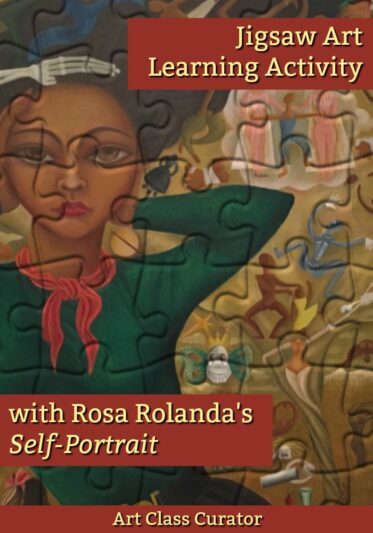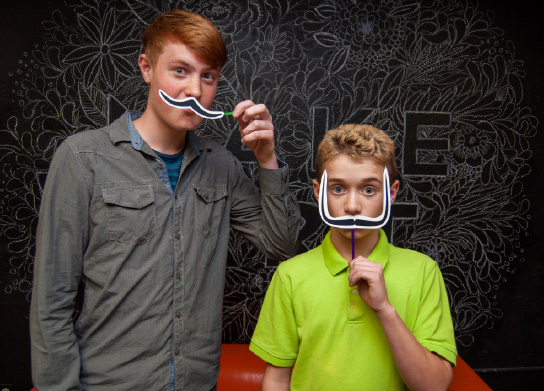How do you tell the story of your life in one self-portrait? Your pain, your relationships, your experiences, your joy, but still create a compelling artwork for the viewer to experience. I recently discovered the art of Rosa Rolanda who has mastered the art of storytelling through a dynamic self-portrait.
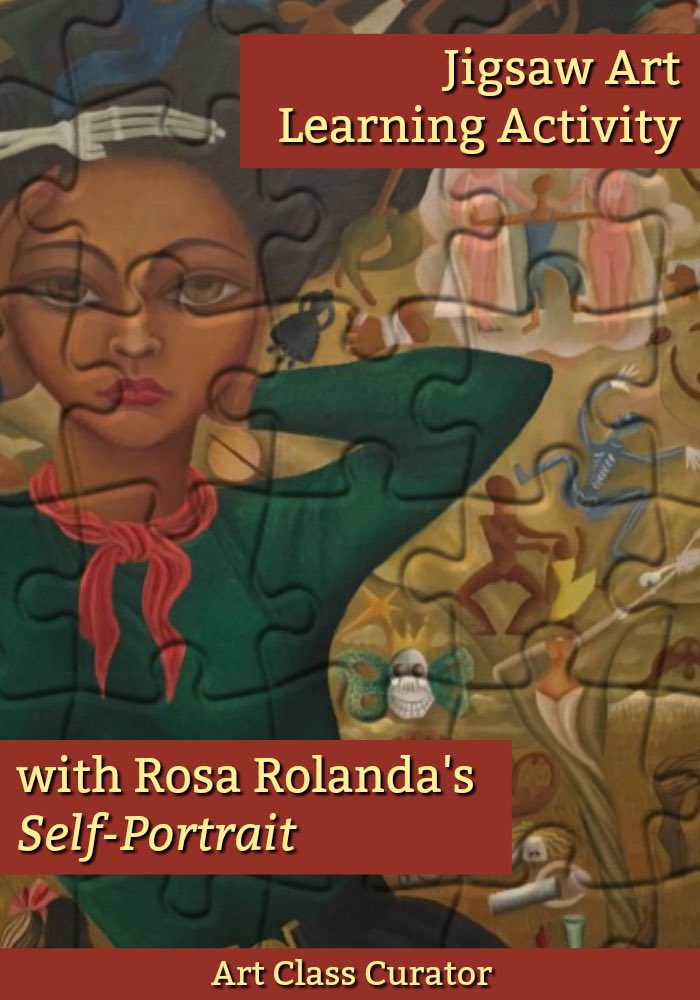
Rosa Rolanda (born Rosamonde Cowan, 1896-1970) was a dancer, actor, choreographer, photographer, art collector, and painter. Rolanda is from America and was a dancer on Broadway when she met her husband, Miguel Covarrubias. They worked together on several productions and books as they both shared an interest in dance. They traveled to Mexico regularly together until they settled near Mexico City.
Rosa Rolanda latched on to Mexico as her home, and her artwork reflects the folk-art influences from her chosen country. While in Mexico and in her travels in Europe, Rosa Rolanda was friends with other artistic couples such as Frida Kahlo/Diego Rivera and Tina Modotti/Edward Weston. You can see influences from these artists in the development of her own artistic work.
I love the art of Rosa Rolanda because you can see her love and passion for art and for life in her work. She says she paints to “delight and amuse.” After reading this article on her and her life and influences, she seems to have a joyful, passionate, and wandering spirit. Rosa Rolanda experimented in just about every art medium, traveled extensively, and let life be her muse.
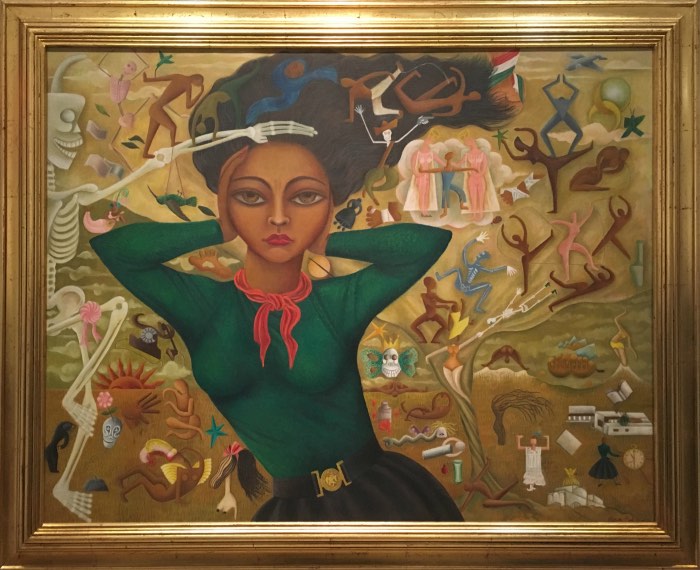
This self-portrait of Rosa Rolanda from the Mexican artwork exhibit at the Dallas Museum of Art last Spring is chock full of all sorts of interesting images and stories. The label text didn’t provide much context, but I found a picture of the label from another museum that told of the break-up of her marriage and how this painting shows her devastation about that event. (Her husband cheated on her, and then they grew apart and separated but never divorced).
Rosa Rolanda Activity
I incorporated the following activity suggestion in my monthly Artworks of the Week bundle for the members of The Curated Connection Library for Hispanic-Heritage Month. One of the Resource Library members, Janet, used this artwork in her classroom and said the following:
“I used Rosa Rolanda’s self-portrait as an opening activity of a new unit with my 8th graders, and they LOVED it! Best and most thoughtful responses I’ve gotten from them on an art viewing exercise, so thank you!” — Janet, Curated Connections Library member
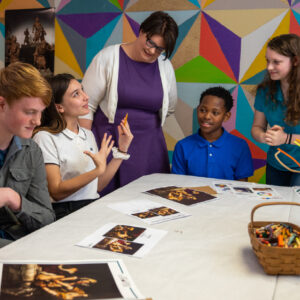
Get the Full Lesson!
This Lesson is in The Curated Connections Library!
Find the full lesson from this post along with hundreds of other art teaching resources and trainings in the Curated Connections Library. Click here for more information about how to join or enter your email below for a free SPARKworks lesson from the membership!
Try out the following learning activity with this painting from Rosa Rolanda to get kids noticing and interpreting the many details in Rosa Rolanda’s portrait.
I would avoid giving any contextual information about the life of Rosa Rolanda before showing this work. The students will have more authentic responses when they can come up with their own ideas based on the imagery in the painting.
This artwork is also filled with symbolism like her fighting the clock in the lower right corner which could be a reference to her age and fleeting time.
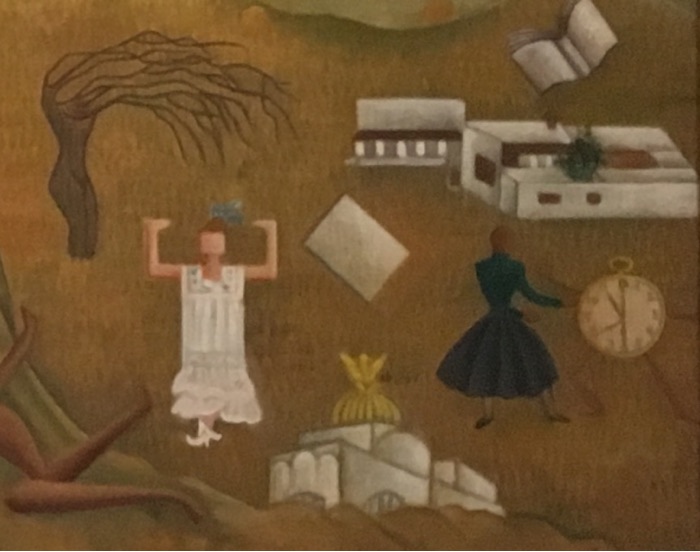
The dancers in the artwork represent dancers from her choreographer ex-husband’s dance troop.
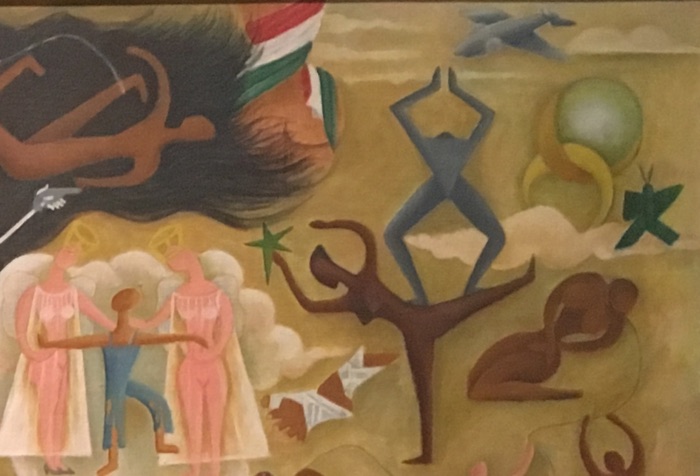
I’m not sure what the woman coming out of the volcano could symbolize, but I bet your students would come up with something more interesting than I could for that!
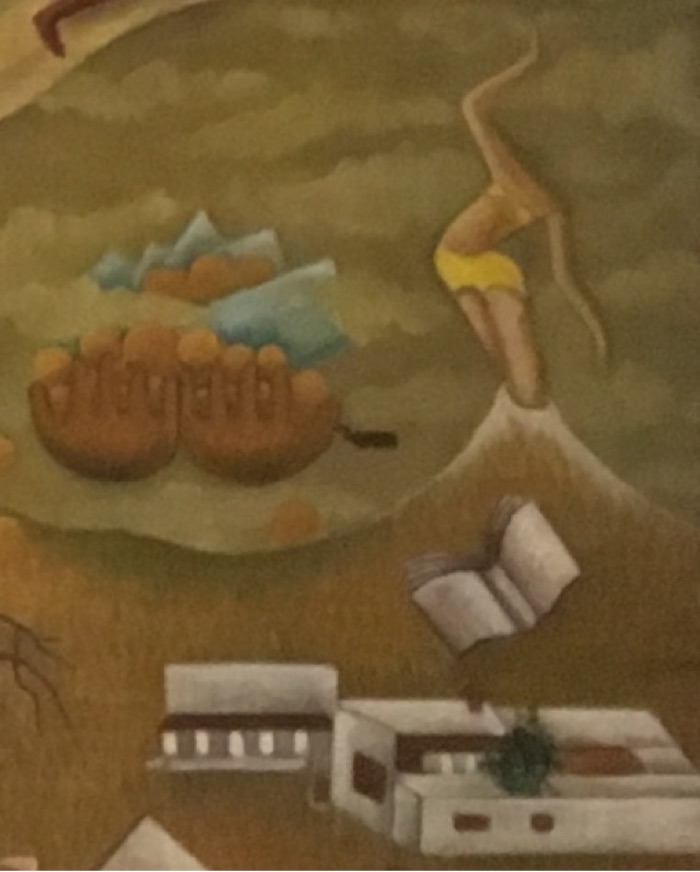
This artwork is fun to discuss with students because there is just so much for them to decipher. My only fear is that it may get a little overwhelming and disjointed because there is so much going on.
To avoid the overwhelm, break it up and try something different.
Print the artwork and give each group of students one piece of the artwork, not including the main figure. Each student group interprets their component of the artwork together and then they come together as a class to share their findings. After discussing the different parts, lead a discussion on how all of the components along with the main portrait of Rolanda work together as a whole.
There’s a bit of nudity in this artwork as well, but it is pretty stylized, so I think you are probably good with it. Want my take on including artwork with nudity in the classroom? Here is an article with my thoughts and strategies!
I’ve broken up the painting for you and created a worksheet with guided student questions. The free download includes the student worksheet and the art pieces to print.
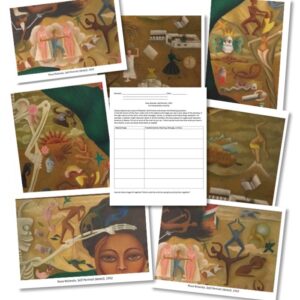
Free Resource!
Rosa Rolanda Jigsaw Art Learning Activity
Take this activity into your classroom today with this free printable resource!

